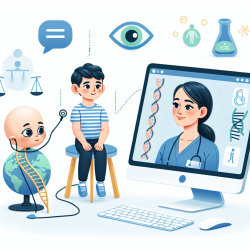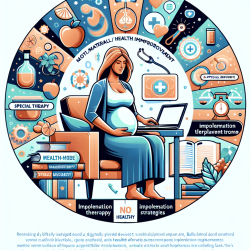The transition from pediatric to adult care for adolescents with congenital heart disease (CHD) is a critical phase that demands specialized attention and coordinated efforts from healthcare professionals. The research article, "Transition to adulthood and transfer to adult care of adolescents with congenital heart disease: a global consensus statement of the ESC Association of Cardiovascular Nursing and Allied Professions (ACNAP)," provides a comprehensive overview of best practices and recommendations for improving transitional care.
Here, we discuss how practitioners can implement these findings to enhance their skills and encourage further research.
Understanding Transitional Care
Transitional care involves a series of planned interventions that support adolescents as they move from pediatric to adult healthcare systems. The consensus document highlights the importance of starting this process early, ideally in early adolescence, and continuing it into emerging adulthood. This ensures that adolescents are well-prepared to manage their health independently.
Key Components of Effective Transitional Care
- Pre-Transition Introduction: Introduce the transition process and transfer policy to patients and their families around the age of 12. This can be done during outpatient visits or through introductory letters.
- Assessment of Needs and Progress: Use comprehensive assessments, such as the HEADDDSS psychosocial interview guide, to understand the adolescent's living circumstances and lifestyle. Follow up on their progress regularly.
- Counseling and Education: Provide adolescent-friendly education and counseling on medical, psychosocial, and behavioral topics. Use various formats and tools, such as medical summaries, health passports, and web-based programs.
- Transition Plan: Develop a working document that records assessments, describes progress, and outlines planned actions. This should be updated throughout the transition process.
- Facilitating Peer Contact: Encourage peer interactions through youth ambassadors, local patient organizations, or online platforms.
- Introducing the Adult Care Team: Ensure that patients and families are familiar with the adult congenital heart disease (ACHD) team and the outpatient clinic. This can be done through guided visits or virtual presentations.
- Transfer to Adult Care: Actively refer patients to an ACHD team with a complete medical summary. The optimal age for transfer is 18-19 years, but this can vary based on the adolescent's developmental competencies.
- Monitoring Continuity of Care: Schedule the next visit to the ACHD team and send reminders to ensure patients attend their appointments.
- Guidance for Parents: Provide support and information to parents, addressing their concerns and helping them adapt to their changing roles.
Empowering Patients and Families
Empowerment is a key goal of transitional care. It involves enabling patients to take control of their health, increasing their autonomy, and improving their quality of life. Empowered patients are more likely to have better clinical outcomes and communicate effectively with healthcare providers.
Models for Transition
Different models for transition exist, each with unique characteristics. The "transition coordinator model" is preferred as it comprehensively addresses the challenges of transition by accompanying the adolescent through the process and providing continuous support.
Conclusion
Transitional care and the transfer to adult care settings are crucial for adolescents with CHD. Practitioners must implement structured and individualized transitional care interventions to ensure continuity of care and improve patient outcomes.
To read the original research paper, please follow this link: Transition to adulthood and transfer to adult care of adolescents with congenital heart disease: a global consensus statement of the ESC Association of Cardiovascular Nursing and Allied Professions (ACNAP), the ESC Working Group on Adult Congenital Heart










